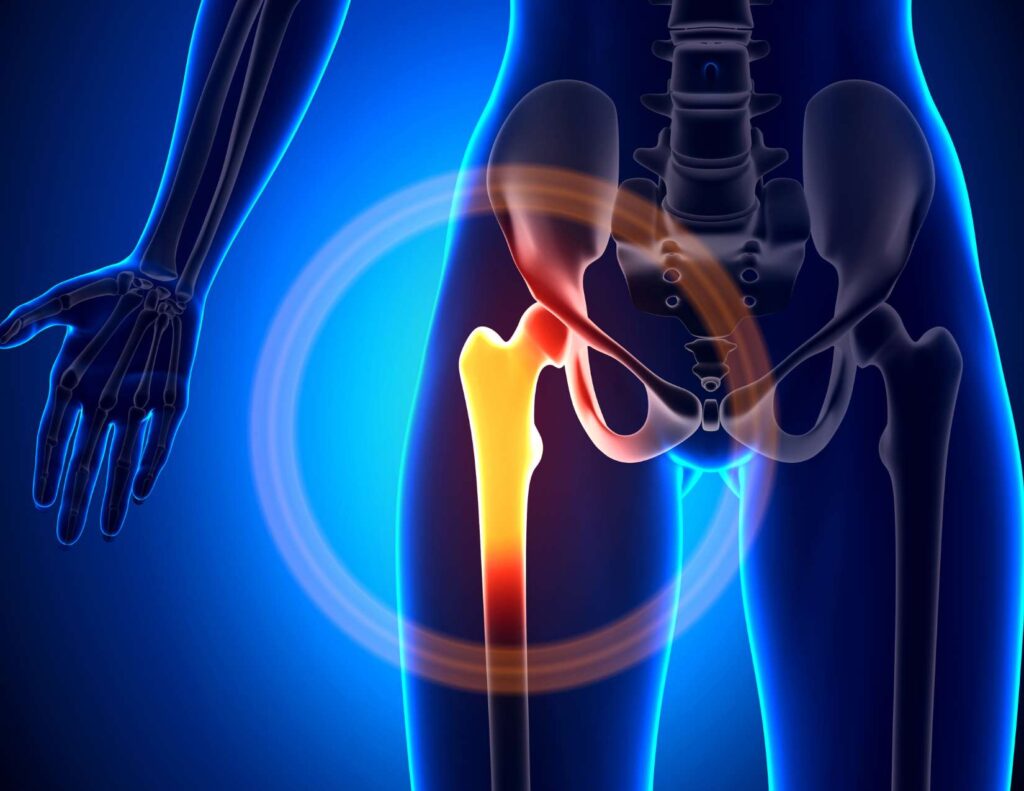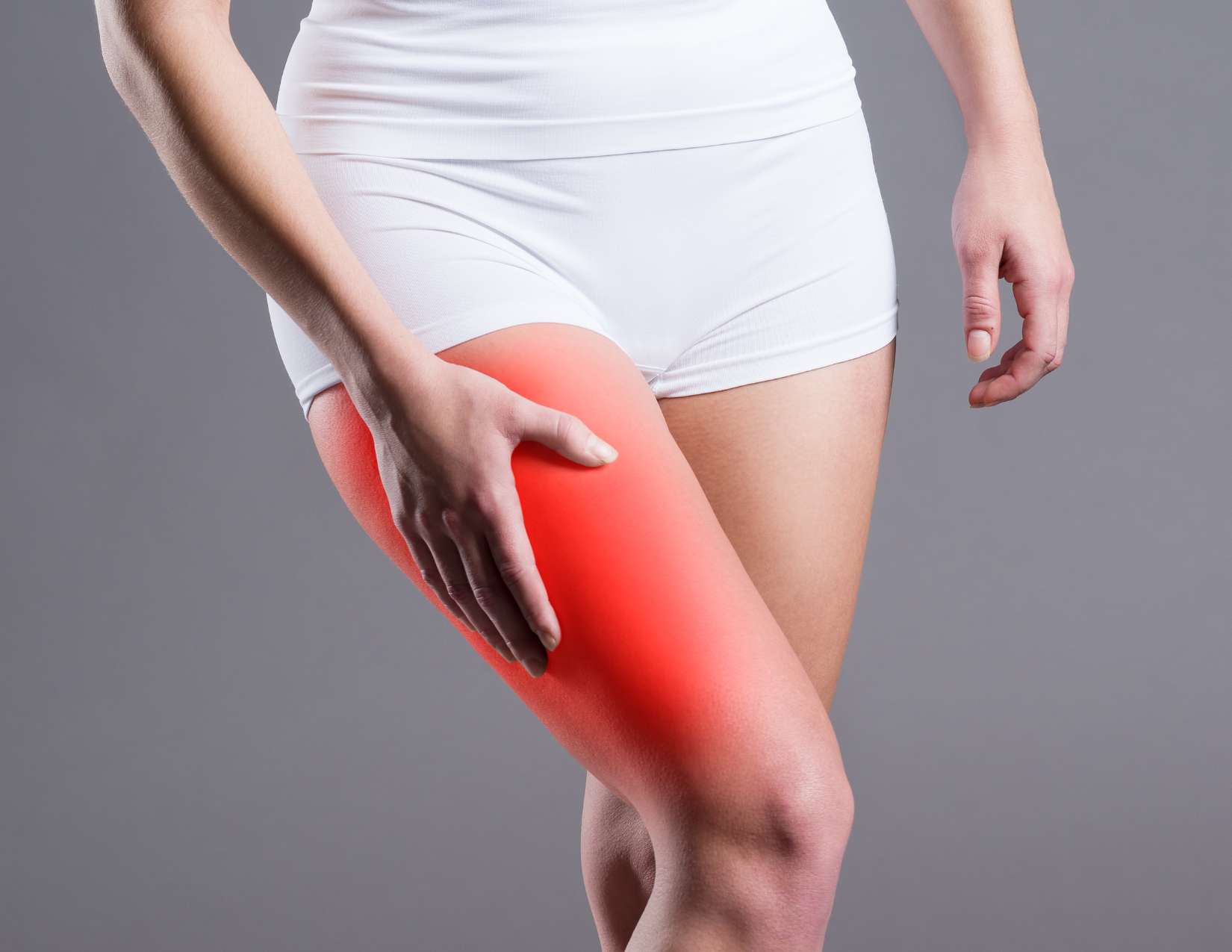Unraveling the Connection: Can Hip Impingement Cause Sciatica?
Understanding hip impingement and sciatica
As a chiropractor, I’ve treated patients who’ve experienced both hip impingement and sciatica. And, I understand the frustration and pain that can come with these conditions. But what exactly are hip impingement and sciatica, and can hip impingement cause sciatica? In this article, we will delve into the world of hip impingement and sciatica, exploring their symptoms, diagnosis, treatment options, and even how to prevent them. So, let’s dive in!

Table of Contents
What is sciatica?
Sciatica is a condition that causes pain, numbness, or tingling in the lower back, buttocks, and down the leg. It occurs when the sciatic nerve, which runs from the lower back through the hips and down each leg, becomes compressed or irritated “a pinched nerve.” The most common cause of sciatica is a herniated disc in the spine, which puts pressure on the nerve. Other common causes of sciatica include spinal stenosis, spondylolisthesis (when one vertebra slips forward over another), degenerative disc disease, lumbar muscle strain, or infection. However, there are other factors that can contribute to the development of sciatic nerve pain, including hip impingement.
What is hip impingement?
Hip impingement, also known as femoroacetabular impingement (FAI), is a condition in which there is abnormal contact between the ball of the hip joint and the socket. This can occur due to a structural abnormality in either the ball or socket of the hip joint, or both. There are three types of hip impingement: cam impingement, pincer impingement, and combined impingement. Cam impingement occurs when there is a bony overgrowth on the ball of the hip joint, while pincer impingement occurs when there is extra bone growth on the socket. Combined impingement is a combination of both types.
The relationship between hip impingement and sciatica
Now that we understand what sciatica and hip impingement are, let’s explore their connection. While sciatica is commonly associated with issues in the spine, such as herniated discs, it can also be caused by hip impingement. When there is abnormal contact between the ball and socket of the hip joint, it can lead to inflammation and irritation of the nearby sciatic nerve. This can result in the characteristic pain, numbness, and tingling associated with sciatica. Additionally, the abnormal movement and mechanics of the hip joint caused by impingement can put strain on the lower back, further contributing to the development of sciatica.
It is important to note that not all cases of sciatica are caused by hip impingement, and not all cases of hip impingement result in sciatica. However, if you are experiencing symptoms of both conditions, it is worth exploring the possibility of a connection between the two.

Symptoms of hip impingement and sciatica
Both hip impingement and sciatica can cause a range of symptoms that can vary in severity. In the case of hip impingement, common symptoms include:
- Hip pain, particularly during or after physical activity
- Limited range of motion in the hip area
- Groin pain or stiffness and discomfort in the area
- Clicking or locking sensation in the hip joint
- Referred pain to the back of the hip
On the other hand, sciatica is characterized by:
- Low back pain that radiates down the leg
- Numbness or tingling in the buttocks, leg, or foot
- Muscle weakness in the leg or foot
- Buttock pain, knee pain, leg pain or foot pain
- Difficulty sitting or standing for extended periods
It is important to consult with a healthcare professional for an accurate diagnosis if you are experiencing any of these symptoms.
There is a condition called piriformis syndrome that can have symptoms that mimic those of both hip impingement and sciatica pain. Wondering which one is affecting you? Piriformis syndrome vs Sciatica is a difficult but important distinction to make.
The symptoms of piriformis syndrome may include:
- Pain in the buttocks muscle and piriformis muscle
- Numbness or tingling in the leg or foot
- Decreased range of motion in the hip region
- Muscle spasms and weakness in the buttock, leg, hip, or foot
Piriformis syndrome is more common in women and often occurs after a significant period of inactivity. Treatment may include massage, stretching exercises, physical therapy, medication, or surgery.
It is important to discuss any of the above symptoms with a healthcare professional to determine the best treatment plan. It is important to consult with a health professional if any of these symptoms are present as they can accurately diagnose you.

Diagnosing hip impingement and sciatica
To diagnose hip impingement, your healthcare provider will likely start with a physical examination, where they will assess your hip joint’s range of motion, perform specific tests, and ask about your medical history. Imaging tests, such as X-rays or magnetic resonance imaging (MRI), may also be ordered to provide a more detailed view of the hip joints to identify any structural abnormalities such as labral tears.
Similarly, diagnosing sciatica involves a thorough physical examination and a discussion of your symptoms and medical history. Imaging tests, such as an MRI or computed tomography (CT) scan, may be ordered to look at the lumbar spine, SI joints and nerve roots to determine the cause of the sciatic nerve compression.
Treatment options for hip impingement and sciatica
The treatment options for hip impingement and sciatica can vary depending on the severity of the conditions and the individual’s specific circumstances. In the case of hip impingement, conservative treatments may include:
- Rest and activity modification
- Physical therapy to strengthen the hip muscles and improve joint mechanics
- Nonsteroidal anti-inflammatory drugs (NSAIDs) to reduce pain and inflammation
- Corticosteroid injections to provide temporary relief from symptoms
If conservative treatments are not effective, surgery may be considered to correct the structural abnormalities in the hip joint.
For sciatica, conservative treatments may include:
- Pain medication, such as over-the-counter nonsteroidal anti-inflammatory drugs (NSAIDs)
- Physical therapy to improve posture, strengthen the back and core muscles, and alleviate pressure on the sciatic nerve
- Epidural steroid injections to reduce inflammation and provide temporary sciatic pain relief
For milder cases of sciatica that don’t require immediate medical attention or for those with chronic sciatic nerve pain, lifestyle modifications may help reduce symptoms. In some rare cases, surgery may be recommended where conservative treatments haven’t helped.

Rehabilitation exercises for hip impingement and sciatica
Regardless of the treatment approach chosen, rehabilitation exercises play a crucial role in the recovery process for both hip impingement and sciatica. For hip impingement, exercises that focus on improving hip joint mechanics, strengthening the hip muscles, and increasing flexibility in the soft tissues are often recommended. These may include:
- Hip stretches to improve range of motion
- Hip strengthening exercises, such as squats and lunges
- Core exercises to improve stability and support the hip joint
- Balance and proprioceptive exercises to improve coordination and reduce the risk of falls
For sciatica, exercises that target the lower back, buttocks, and legs are typically prescribed. These may include:
- Gentle stretches to alleviate pressure on the sciatic nerve
- Strengthening exercises for the core, gluteal muscles and back muscles
- Low-impact aerobic exercises, such as walking or swimming, to improve overall fitness and circulation
- Balance exercises to improve stability and reduce the risk of falls
- Pelvic floor muscle strengthening exercises, such as Kegel exercises, to help support the lower back and sciatic nerve
- Exercises to address any underlying conditions, such as poor posture. These may include stretching and strengthening exercises for the neck, shoulders and back.
It is important to work with a qualified healthcare professional, chiropractor or physical therapist to develop a personalized exercise plan that is suitable for your specific condition and needs.
Preventing hip impingement and sciatica
While it may not always be possible to prevent hip impingement or sciatica, there are steps you can take to reduce your risk. Maintaining a healthy weight, practicing good posture, avoid wearing high heels and engaging in regular exercise to strengthen the muscles supporting the hip and back can all contribute to hip and spine health. Additionally, avoiding activities that put excessive strain on the hip joint, such as repetitive high-impact movements or heavy lifting, can help prevent the development or worsening of hip impingement. If you have a sedentary job, taking regular breaks to move and stretch can also help reduce the risk of developing sciatica.
Conclusion- Can hip impingement cause sciatica?
In conclusion, while not all cases of sciatica are caused by hip impingement, the two conditions can be connected. Hip impingement can lead to inflammation and irritation of the sciatic nerve, resulting in sciatica symptoms. If you are experiencing symptoms of both conditions, it is important to consult with a healthcare professional for an accurate diagnosis and appropriate treatment plan. Remember, early intervention and a comprehensive treatment approach that includes rehabilitation exercises can help the healing process, alleviate pain, improve function, and prevent further complications. Take care of your hips and back, and don’t let hip impingement and sciatica impede your quality of life.







